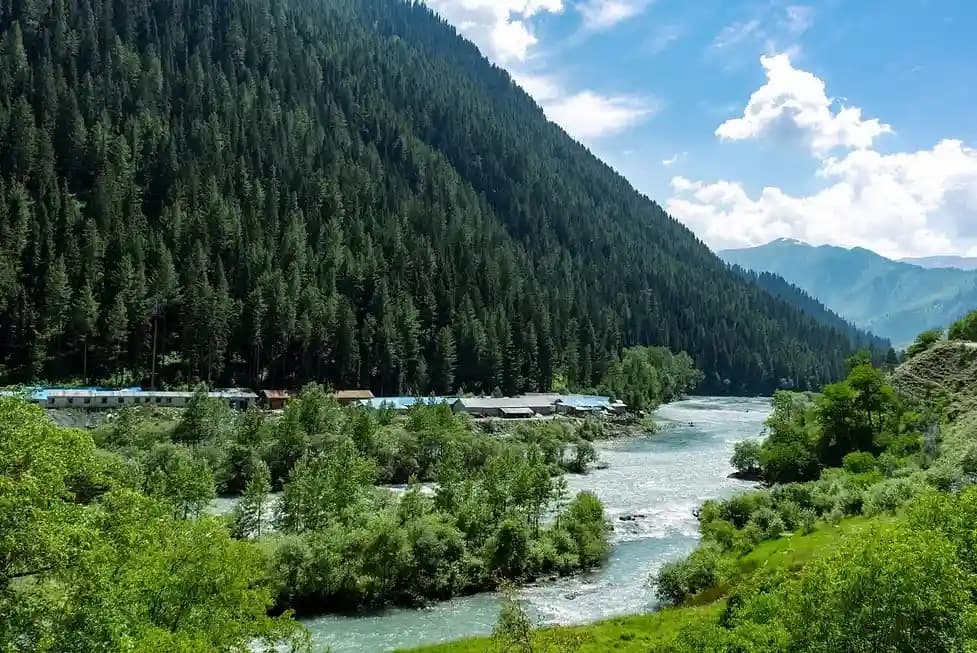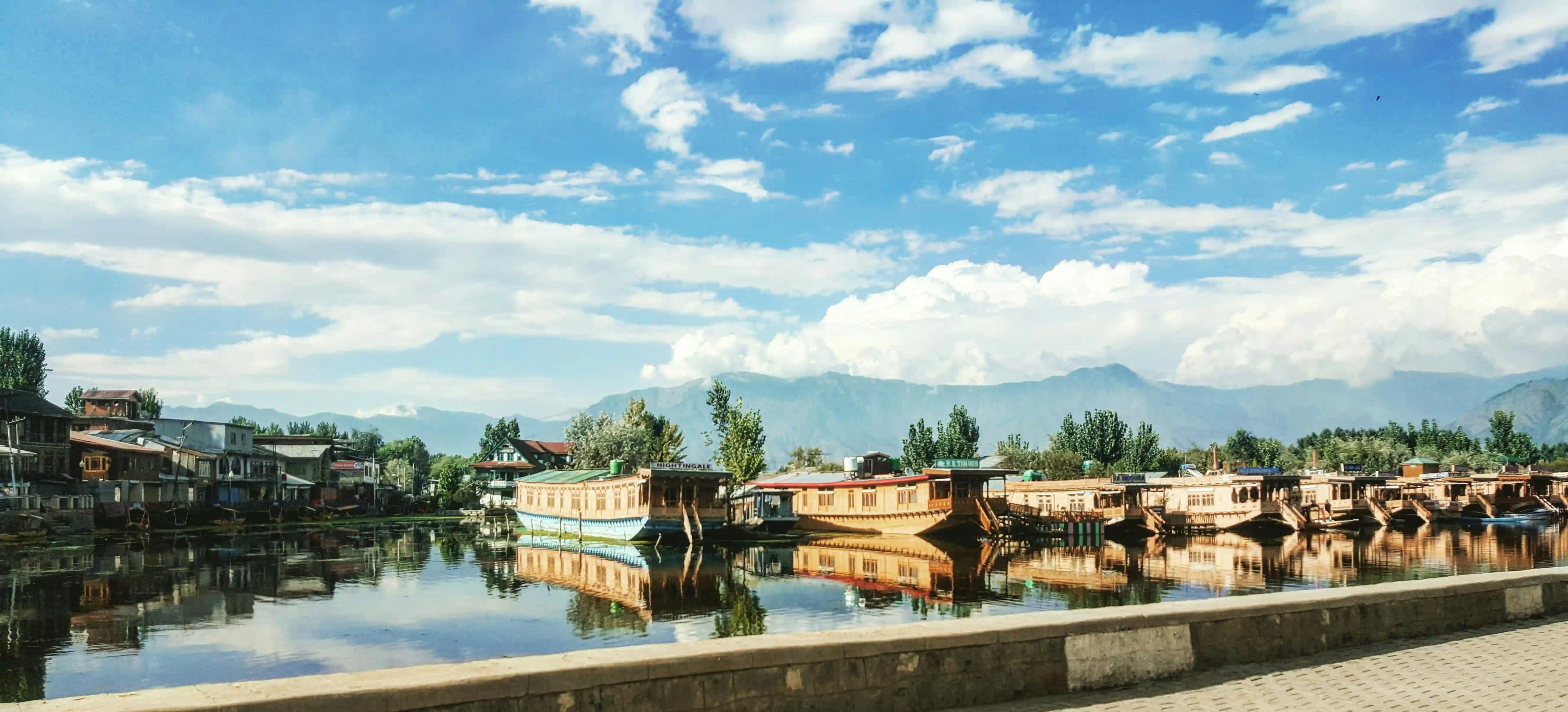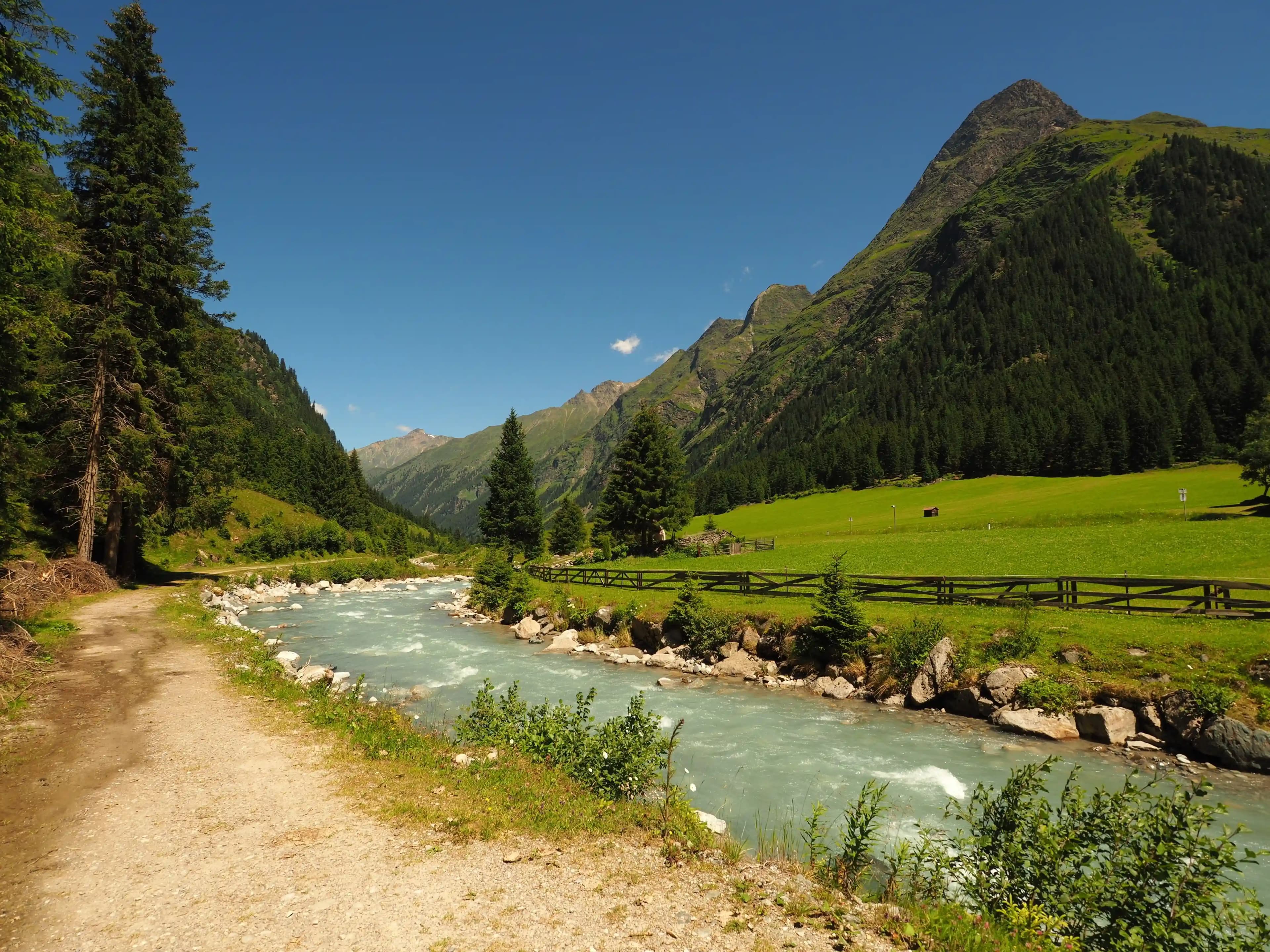Dachigam National Park, nestled in the stunning environment of the Indian state of Jammu and Kashmir, is one of the world's most charming and lesser-known animal sanctuaries. Dachigam, which translates to "ten villages," spans 141 square kilometers and highlights the region's magnificent beauty and abundant biodiversity. Dachigam National Park provides something for everyone, whether you're a nature lover, a wildlife enthusiast, or just searching for a calm respite from the rush and bustle of everyday life.
Where Is Dachigam National Park Located?
Dachigam National Park is located around 22 kilometers from Srinagar, the summer capital of Jammu and Kashmir. The park is split into two sections: Lower Dachigam and Upper Dachigam, with each providing unique attractions and environments. Lower Dachigam is more accessible and famed for its lush green meadows, dense woods, and clear streams. Upper Dachigam, on the other hand, is more rough and unreachable, with soaring peaks and high-altitude terrains, making it a difficult but rewarding trip for trekkers.
The Seasons of Dachigam: A Year-Round Paradise
Dachigam National Park's appeal shifts with the seasons, providing tourists with a unique experience depending on when they visit.
Spring (March to May):
The park comes to life with fresh leaves and flowering flowers during this season of regeneration. Many migrating birds visit Dachigam around this time, making it a good period for birdwatching. The good weather and bright scenery make it an ideal time for walking and experiencing the park's natural wonders.
Summer (June to August):
Warmer temperatures make it ideal for exploring the park's higher parts. The snow has disappeared, opening up new hiking paths and allowing people to reach higher elevations. The meadows are in full flower, and the park is alive with the noises of insects and birds.
Autumn (September to November)
is undoubtedly the most attractive season in Dachigam, with the leaves changing into a breathtaking display of hues. The weather is chilly and crisp, and the sky is clear, providing great visibility. This is also a breeding time for the Hangul, giving it an ideal opportunity for wildlife lovers to view these magnificent birds.
Winter (December-February):
Dachigam is transformed into a snowy paradise. The lower portions are snow-covered, while the upper areas become unreachable owing to severe snowfall. However, for those who appreciate the cold and splendor of a winter scene, now is a great time to come. The park's rivers freeze over, providing a peaceful and relaxing scene.
The Exceptional Flora of Dachigam
One of the first things you'll notice when you approach Dachigam National Park is the vast variety of plant life. The park's vegetation changes greatly with height, resulting in several ecosystems that sustain a diverse range of species. In the lower sections, temperate broadleaf forests are populated by chinars (maple trees), willows, poplars, and a variety of shrubs. As you climb higher, you'll see coniferous woods populated with pine, fir, and deodar trees. Upper Dachigam's alpine meadows include a diverse array of wildflowers, including blue poppies, potentillas, and anemones.
During the spring and summer, the park becomes a carnival of color, with blossoming flowers covering the meadows and birds singing melodiously in the air. Autumn has its own allure, as the leaves of the chinar trees turn a magnificent shade of crimson and gold, providing a stunning contrast against the stark evergreen backdrop of the conifers.
Wildlife: The True Stars of Dachigam
Dachigam National Park is habitat to a diverse range of animal species, many of which are unique to the region. The Hangul, or Kashmir stag, is the park's most well-known resident, an endangered species and the only remaining member of India's Red Deer family. The Hangul has become known for its spectacular antlers, which can have up to 16 points. Dachigam is the final bastion of this gorgeous species, thus conservation activities inside the park are critical for its survival.
Aside from the Hangul, the park is home to a variety of species, including Himalayan black bears, leopards, the snow leopard, musk deer, and the quiet Himalayan serow. Dachigam is home to more than 150 different bird species, which will thrill birdwatchers.
Adventures and Trekking in Dachigam
Dachigam National Park presents a variety of hiking options for both beginners and experienced hikers. The park's paths lead you over some of the most picturesque scenery possible, with amazing panoramas of snow-capped mountains, verdant valleys, and tumbling waterfalls. One of the most popular hikes is to Marsar Lake, a high-altitude lake bordered by breathtaking scenery. The walk begins in Dachigam's lower areas and leads you through dense woods, alpine meadows, and steep terrains, with opportunities to see animals in the park along the route.
Another thrilling hike is to the top of Mount Mahadev, the tallest peak in the Srinagar area. The hike is difficult, with steep ascents and rough roads, but the sweeping views at the summit make all of it worthwhile. The sight of the sun rising over the Himalayas' snow-capped peaks is an awe-inspiring show that trekkers remember for a lifetime.
Tips for Visiting Dachigam National Park
Plan Your Visit: Dachigam welcomes visitors all year, however certain places may be closed during the winter owing to excessive snowfall. Before arranging a visit, consult with the park officials.
Hire a Guide: The park is large, and having a local guide may substantially improve your experience. Guides are informed about the park's flora, animals, and trails and may assist you see creatures that you would otherwise overlook.
Respect the Species: Keep in mind that Dachigam is a protected region, therefore keep a safe distance from the wildlife. Do not disturb the animals and avoid making loud noises that may scare them.
Carry Essentials: If you plan on trekking, make sure you have adequate water, food, and a first-aid kit. Wear suitable walking shoes and dress in layers because the weather might change quickly.
Photography: Dachigam's breathtaking landscapes and fauna provide several photographic possibilities. However, follow the park's guidelines and avoid using flash while photographing animals.
Conclusion
Dachigam National Park is a buried jewel, where nature's splendor is preserved in its most pure form. Its diverse wildlife, breathtaking scenery, and the existence of the rare Hangul make it a one-of-a-kind location that should be on any nature lover's bucket list. Dachigam provides an experience that refuels the spirit and rewards you with memories that will last a lifetime, whether you're walking through its alpine meadows, seeing animals, or simply soaking in the tranquility of its surroundings.
So, the next time you plan a vacation to the Kashmir Valley, make sure to add Dachigam National Park on your itinerary. Allow the cool mountain air, the whisper of the trees, and the cry of the wild to transport you to a world filled with wonder, where every moment celebrates our planet's magnificent beauty.
Frequently Asked Questions (FAQs):
1. Dachigam National Park is known for what?
Dachigam National Park is well renowned for its diverse wildlife, breathtaking scenery, and as the final refuge for the rare Hangul or Kashmir stag. It provides a tranquil setting with lush woods, alpine grasslands, and diverse animals.
2. Where is Dachigam National Park located?
Dachigam National Park lies in the Indian state of Jammu and Kashmir, some 22 kilometers from the region's summer capital, Srinagar. It spans an area of around 141 square kilometers.
3. What type of species can you see at Dachigam National Park?
The park is home to a diverse range of wildlife, including endangered Hangul deer, Himalayan black bears, leopards, snow leopards, musk deer, and several bird species such as the Himalayan monal and golden oriole.
4. What is the ideal time to visit Dachigam National Park?
The ideal times to visit are in the spring (March to May) and fall (September to November), when the weather is nice and the park's flora and animals are most colorful. Summer is also ideal for high-altitude trekking.
5. How can I go to Dachigam National Park?
Dachigam National Park is a short drive from Srinagar. The closest airport is Sheikh ul-Alam International Airport in Srinagar, which has been well connected to major Indian cities. From Srinagar, take a cab or a local bus to the park.
6. Is it safe to visit Dachigam National Park?
Dachigam National Park is typically considered safe for tourists. However, it is critical to observe park rules, respect wildlife, and stay on authorized pathways. Hiring a local guide is suggested for a safe and educational visit.




















































